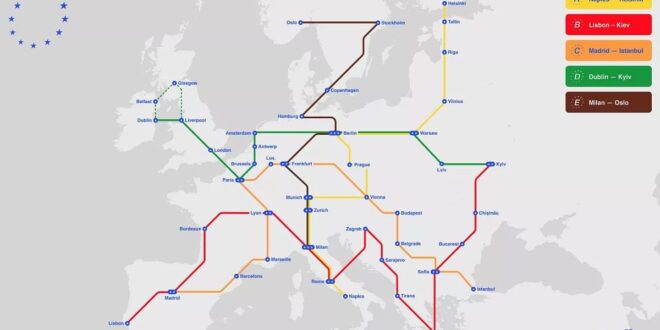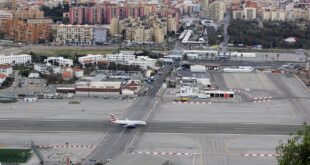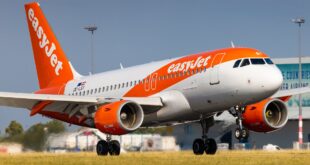New proposals could change the way Europeans travel around the continent.
Unveiled by Copenhagen-based think tank 21st Europe, Starline is a visionary plan to connect 39 cities in Europe with a vast high-speed rail network – one that runs with the simplicity and regularity of a metro system.
With a network of 22,000 kilometres and trains that travel at speeds of between 300-400 km/h, it aims to connect all countries in Europe.
READ MORE Contract for feasibility study of Spain’s Costa del Sol rail set will be awarded. Project will take at least 18 months before deciding if it is feasible to build.
That would slash travel times across the continent – turning current day-long journeys into seamless, cross-border commutes.
A statement by 21st Europe said that a truly integrated railway system was no longer a convenience, but a necessity to ensure Europe’s survival in the 21st century.


Starline’s supporters feel that the current efforts to improve the continental connections are insufficient.
The think tank claims that despite public demand, travel across borders remains fragmented and slow. It cites outdated stations and inconsistent standards of train service in different countries.
Starline is determined to change that. Starline’s unified design, built on existing and new infrastructure, would provide a metro-like ride.
Trains will be identified by the deep blue livery. This is a tribute to the EU flag and includes star details along the sides.
Inside, passengers will find a modern design without the traditional class divisions.


Instead of a closed-plan seating arrangement, carriages are designed to have quiet zones, areas for families, cafes, and open-plan seating.
Starline’s full-speed operation could reduce travel time dramatically and have a significant environmental impact.
With transportation accounting for nearly 29% of the EU’s greenhouse gas emissions, Starline aims to curb short-haul flights – reducing aviation’s footprint by up to 80%.
The organisation said that a bold switch to high-speed trains could be Europe’s best shot at meeting its 2050 goals of net-zero emissions while still ensuring fast and green mobility.
Starline’s ambitions go beyond the trains themselves. The network is planning to build new stations near major cities as cultural and community hubs.


These spaces would go beyond platforms and ticket machines, offering restaurants, concert halls, museums, sports venues, and public event areas – making them destinations in their own right.
Kaave Pour, founder of 21st Europe, said that railroads were never just about transport. “They helped shape economies, cultures and even national identities. “Today, we need to have them do the same for Europe.”
According to the proposal, the rail network would be funded by the public and operated exclusively by national railway companies.
A new European Rail Authority would supervise operations and ensure interoperability. It would also ensure harmonised labor agreements and safety regulations that are shared across borders.
Tickets would be available through a unified, open platform – much like air travel today – with AI-driven security at stations and pricing that undercuts both short-haul flights and current rail fares.
Starline is in its concept phase and it would take years to implement, but 21st Europe insists that this is the blueprint for real change.
According to the think tank, Starline, similar to China’s high speed rail revolution, could create millions of jobs, and significantly contribute to urban GDP growth.
The group stated that “Now we start building a network to push real change. We bring together policymakers and designers as well as industry leaders to transform vision into action.”
 Costa News Spain Breaking News | English News in Spain.
Costa News Spain Breaking News | English News in Spain.






